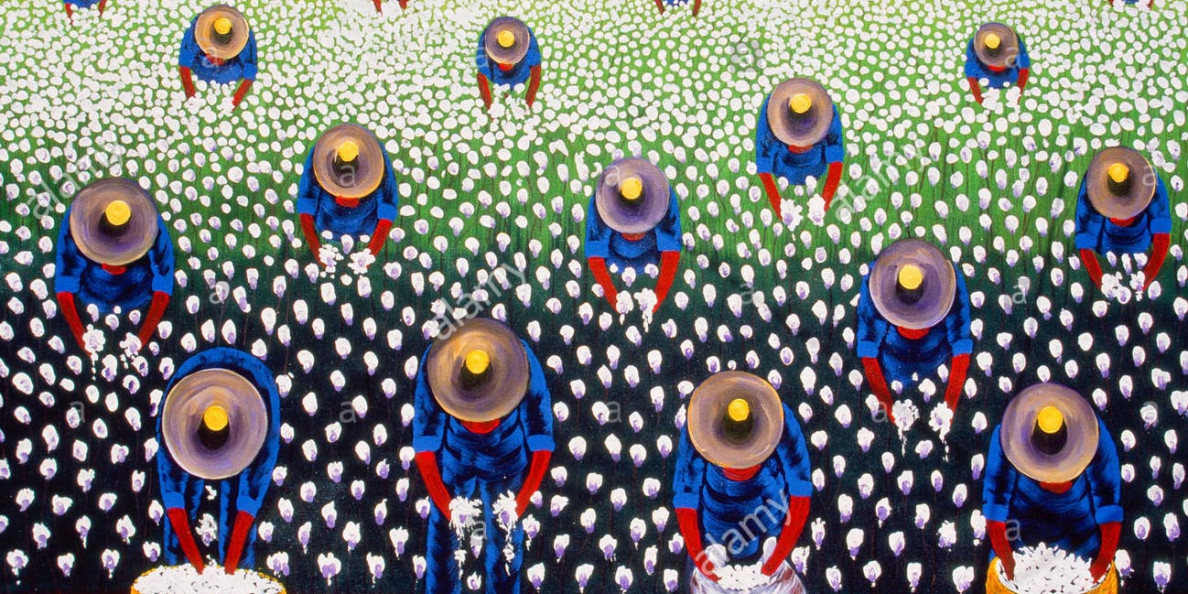While corn remains the major safrinha crop for Brazilian farmers, more cotton acreage is being planted in Mato Grosso this spring, as well.
Over the past two years, cotton planting has increased by nearly one-third for the safrinha (second crop) in Mato Grosso. The Institute for Mato Grosso Economics of Agriculture (IMEA) forecasts Mato Grosso farmers will plant 1.1 million hectares (2.71 million acres) of cotton this spring. The Brazilian Association of Cotton Producers (Abrapa) forecast cotton acreage to grow to 1.4 million hectares (3.46 million acres). Mato Grosso accounts for about 88% of Brazil’s cotton production.
China is the top market for Brazilian cotton, and a 25% tariff on U.S. cotton creates expectation that continued trade disruption between the U.S. and China will be to Brazil’s advantage.
Still, corn acreage in Mato Grosso is projected to remain steady at 4.7 million hectares (11.6 million acres). Harvest is projected at 28.6 million metric tons, or just under 1.13 billion bushels, according to IMEA.
Farmers in other states rely more heavily on corn than cotton for the safrinha crop. Overall, Brazil is expected to plant 12.6 million hectares (31.1 million acres) of corn.
Shifting Corn Acres to Cotton
Farms owned by Brazil’s largest agribusiness, Amaggi Group, are shifting acreage more heavily to cotton from corn this spring. A manager at an Amaggi farm outside Campo Novo do Parecis told a group of American farmers late last week that the farm was planting 98,800 acres into cotton and just 12,350 acres into corn. That’s basically a reversal from last year when the farm planted 74,100 acres into corn.
Amaggi has seven farms in Mato Grosso with 300,000 planted hectares (741,000 acres) in the state, as well as 90,000 hectares (222,300 acres) in mandatory reserve.
The manager said all three Amaggi farms in the south-central region of Mato Grosso were moving more heavily into cotton. Amaggi also is increasing its investments in cotton ginning and storage, as well.
One possible reason for some farmers planting more cotton this year in Mato Grosso is a new state tax of 0.50 reals on each bag of corn sold, which equates to 2.2 bushels. Farmers are paid 19 reals per bag, ($2.33 a bushel right now based on the exchange rate of $1 equaling 3.7 reals).
As Brazilian farmers boost their cotton acreage, the National Cotton Council in Memphis released some economic analysis for 2019 over the weekend. NCC projects U.S. farmers will plant 14.5 million acres of cotton, up 2.9% from a year ago, according to Jody Campiche, NCC’s vice president of economics and policy analysis.
World cotton production is estimated to increase by 7 million bales in 2019 to 125.5 million bales, which would be the highest level since the 2011 crop. Each bale amounts to 480 pounds.
NCC notes that, “Prior to the implementation of tariffs, the United States was in a prime position to capitalize on the increase in Chinese cotton exports.” Now, Brazil, Australia and other countries have gained market share. Vietnam was the top market in 2018 for U.S. cotton, followed by China and Mexico.
China has lowered its reserves and is expected to increase imports to 11.1 million bales, NCC forecasts. The U.S. also is expected to increase cotton exports to 17.4 million bales in 2019, which would be the second only to 2005 if realized.
Chris Clayton can be reached at Chris.Clayton@dtn.com
Follow him on Twitter @ChrisClaytonDTN


